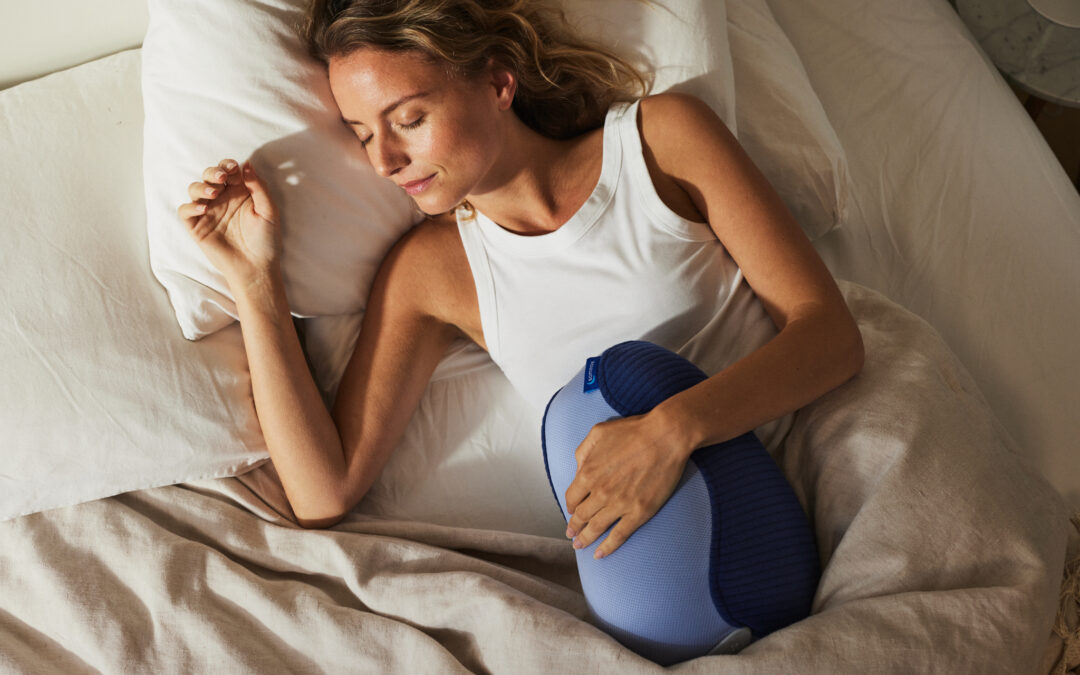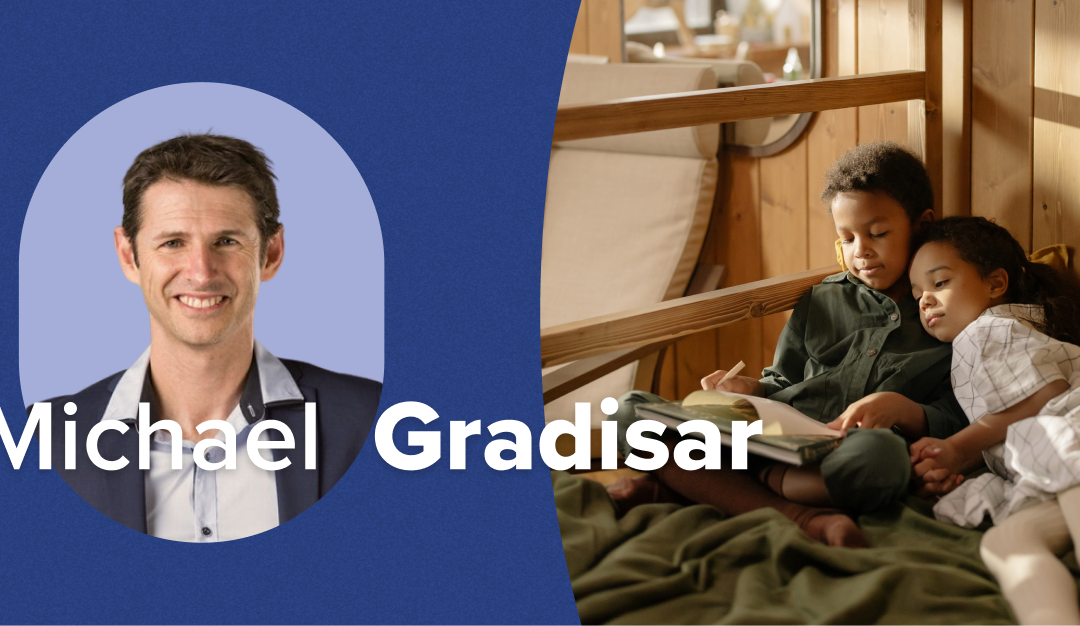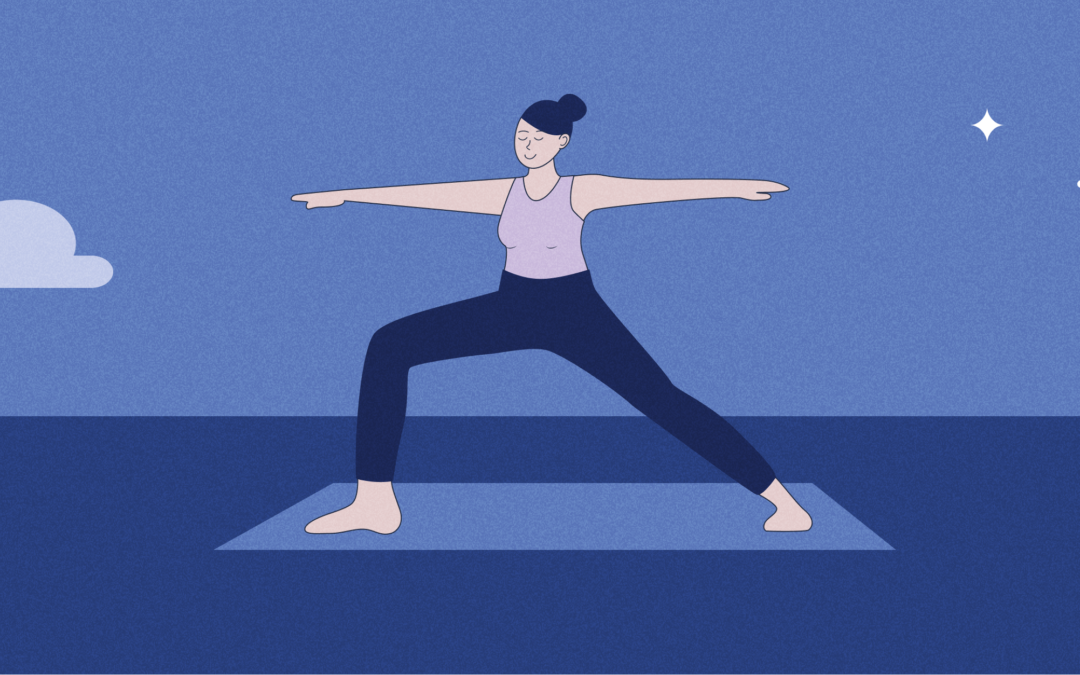
by Baginda Tirtadji | Friday, July 1, 2022 | Breathing, Research
Since we launched Somnox, we’ve been dedicated to gathering feedback to see how it has improved people’s sleep. Recently, we sent out an Impact Survey to hear first-hand from our Dutch customers why they value Somnox and how they are interacting with it.
And the results are in! Our sleep companion is making a huge impact, with users reporting more relaxation and better sleep. But we discovered sleep is not the only thing people use Somnox for—people are using Somnox in creative ways.
Read on to learn more about how Somnox is changing lives and what it can do for you!
How is Somnox helping?
We’re happy to report that Somnox is helping the vast majority of users with at least one aspect of their wellness. The results of our survey are based on the voluntary responses of 483 current Dutch Somnox users. Of this group, 48% have a Somnox 2, and 52% a Somnox 1.
Of Somnox 2 respondents, 94% reported that Somnox helps them sleep better (85% for non-daily users), 85% said Somnox helps them reduce stress, and 71% say they feel more energetic. Wow!
What does Somnox help with?
Sleep issues among Somnox run the gamut. Some people have trouble falling asleep, while others wake up in the middle of the night and can’t get back to sleep. Others wake up too early. Others just want to relax during the day to help manage their stress levels.
On average, respondents report that their Somnox helps with the following things:
- 70% – helps them relax
- 56% – fall asleep faster
- 49% – help fall back asleep in the middle of the night
- 25% – helps them sleep through the night
How attached are users to their Somnox?
In our survey, we asked users how they would feel if they could no longer use their Somnox. Of users, 80% said they would be disappointed if they could no longer use Somnox. This effect was strongest in the 65+ group.
How often are people using Somnox?
Of all active Somnox 2 users, 78% indicate they use the Somnox daily, while about 20% reported they used the product once a week or so. Older users were more likely to use their Somnox daily or even multiple times a day.
We believe that increased usage in older adults is most likely due to the fact that older people wake up more often during the middle of the night.
When are people using Somnox?
Somnox is a sleep companion that is predominantly used in bed before sleep as well as during the night. When asked what part of the day people are using Somnox, more than 93% said they use Somnox in bed before sleep. Interestingly, 64% say they use their Somnox in the middle of the night as well.
For people under 50, especially among the 18-24 group, we saw relatively more use during the afternoon and evening. This could be because mindfulness practices, such as breathing exercises, are more popular with younger people.
Some of our customers have mentioned using Somnox during the day for breathing to manage stress and anxiety. We think this is a great idea, and we are glad to hear people are using Somnox in creative ways!
What feedback are we receiving from customers?
We are receiving very positive feedback from many of our users and are so happy to hear their comments.
Here’s what Somnox users are saying:
“So glad you came up with the Somnox!”
“Very nice product! It’s also good for relaxation exercises.”
“I am very happy with Somnox. Awesome invention and product for everyone, everywhere, all day long.”
Who is using Somnox?
We noticed some important differences between age and gender.
We discovered that 79% of Somnox users are women. This makes sense because women are twice as likely to experience insomnia. Hormonal changes throughout a woman’s life—such as during pregnancy, menopause, or PMS—can cause sleep problems.
And while gender roles are changing, women are also more likely to have an overlapping caregiver and work duties, which results in less time to unwind and sleep.
In terms of age, we found out that 65% of our users are over 50. This is again in line with sleep statistics. As we age, our sleep patterns change—we sleep less overall and have more trouble falling and staying asleep.
What do people like about the Somnox app?
On the Somnox app, a couple of things that users can adjust are breathing intensity and breathing ratio (out-breath to in-breath). Breathing intensity was the most valued feature, with breathing ratio being the second most valued feature.
Somnox Sense, which is a feature that allows the Somnox to sync its breathing with yours, is the third most valued feature of the app.
Our older users love the starting rate and intensity features, while younger users value Somnox Sense and music options.
Impact results summary
From the results of our survey, we are thrilled to see an overwhelmingly positive response to Somnox. People are using it to help them get a better night’s sleep, feel more energetic, feel more relaxed, and reduce stress levels.
We love to hear that Somnox is making such a positive impact, helping our customers to lead healthier, happier lives.
If you’re curious about how Somnox might help you achieve better sleep or just want to give it a try for yourself, order your very own Somnox today. We offer a risk-free 30-day trial, so you can see for yourself how this little companion can make a big difference in your life.
Try Somnox for 30 days.
Sources
Somnox Impact Survey (2022)
Aging changes in sleep. (n.d.). Medline Plus. Retrieved June 21, 2022, from https://medlineplus.gov/ency/article/004018.htm
Muller, A. (2018, October 2). Why Women Are Twice As Likely To Have Insomnia Than Men. Michigan Health. https://healthblog.uofmhealth.org/health-management/3-reasons-women-are-more-likely-to-have-insomnia#:%7E:text=D.&text=No%20matter%20how%20tired%20you,and%20stay%20asleep%20%E2%80%94%20as%20men

by Luciënne Lieshout | Monday, June 20, 2022 | Breathing, Research
The summer solstice is just around the corner and with it comes hot, sticky nights. Many people find it difficult to get a good night’s sleep during the summer months. Luckily, we’ve got some tips and tricks to help you stay cool and get a good night’s sleep. Keep reading to learn how to sleep when it’s hot!
Is Samantha’s story familiar?
Samantha loves summertime but she doesn’t love summer nights. It gets really humid where she lives, so it stays warm even when the sun has gone to bed. Even though she only sleeps with a light sheet, she finds herself tossing and turning, taking her much longer to get to bed than usual.
She doesn’t want to spend a fortune on air conditioning, so she opens the windows and turns on her ceiling fan, and even brings an extra fan into her room. But she still can’t seem to get cool!
Sound familiar? So what’s the deal—why is it harder for us to sleep during warm summer nights?
Why do we sleep worse when it’s hot?
There are a few reasons why hot weather can make it difficult to sleep. First, long summer days and exposure to light later in the day mean our bodies begin producing melatonin later. Melatonin is the hormone that makes us feel sleepy, so when it’s produced later in the day, we can have trouble falling asleep.
Another reason hot weather can cause us to sleep worse is due to body temperature. Humans and other mammals usually have a lower core body temperature right before and during sleep. These changes in body temperature are actually regulated by our circadian rhythm. Our circadian rhythm controls our internal clock which regulates our sleep/wake cycle. So when it’s hot at night, our bodies have a harder time regulating their temperature.
Okay, so how do I stay cool at night?
There are a few things you can do to lower your body temperature and make it easier to sleep during hot weather.
1) Close your blinds or curtains while the sun is out
Make sure to keep your blinds shut during the day. This will help to keep your room cooler—and you more comfortable—when the sun goes down. If you have blackout curtains, even better! These will block out all light and have insulative properties to further block heat from your bedroom.
2) Control the temperature with fans or evaporative coolers
If you’re not looking to spend a fortune this summer on your energy bill cranking your AC, you can get creative with fans and evaporative coolers. An evaporative cooler (aka swamp cooler) is a very affordable option for cooling a small space. You can buy a portable unit that doesn’t cost much and doesn’t use much electricity. This should help keep the temperature down in your room. You can also turn your ceiling fan on so that it circulates counterclockwise for a wind-chill effect.
3) Assess your bedding situation
Hopefully, you’ve remembered to put your fleece and heavy down comforters away and changed over to summer fabrics. Cotton and linen are affordable options while silk is cooling and helps regulate body temperature. If you don’t have light bedding, now’s the time to invest. You might also want to consider a cooling mattress topper or cooling pillow to help you sleep when it’s hot.
4) Eat light, small meals in the evening
Meals that are heavy in carbs and fats can make you feel sluggish and can cause indigestion, making it harder to sleep. They also take more energy to digest, so this can cause your body to heat up. Spices are also best avoided in the evening as they can cause nighttime hot flashes. Instead, focus on lean proteins and vegetables.
5) Relax your body with the help of Somnox
Summer heat can keep your body feeling uncomfortable when you’re trying to sleep. But stress and anxiety are the main culprits behind sleeplessness. If you can find a way to relax your body and mind before bedtime, you’ll be well on your way to enjoying deep and restful sleep.
That’s where Somnox can help. Your Somnox sleep companion offers a sense of security while relaxing you through the automatic slowing of your breath. You’ll forget the heat and drift off to sleep in no time!
In Conclusion
While we can’t change the weather, there are plenty of things we can do to make our summers more comfortable. From cooling down our bedrooms with fans and evaporative coolers to eating lighter meals in the evening, these tips should help you beat the heat this summer.
And if you still find yourself struggling to get a good night’s sleep, consider investing in a Somnox. This unique sleep companion helps relax your body and mind so that you can drift off faster and easier. So what are you waiting for? Take our quiz to see if Somnox is right for you!
Sources
Neustein, M. R. B. S., MD, & Okoye, W. B. A. (2021, November 12). Why Do You Get Hot When You Sleep? Sleep.Org. https://www.sleep.org/how-sleep-works/does-your-body-temperature-change-while-you-sleep/
Sievers, M. (2021, June 30). How to Stay Cool at Night: 25 Tips. Casper Blog. https://casper.com/blog/how-to-stay-cool-at-night/
Vondrasová D, Hájek I, Illnerová H. Exposure to long summer days affects the human melatonin and cortisol rhythms. Brain Res. 1997 Jun 6;759(1):166-70. doi: 10.1016/s0006-8993(97)00358-2. PMID: 9219878.

by Baginda Tirtadji | Tuesday, May 10, 2022 | Breathing, Research
Sleep is important for a child’s physical growth and cognitive development. However, around 25-50% of young children suffer from some kind of sleep problem [1]. Bad sleep has an impact on the child’s development and daily life, but can also influence the sleep and stress levels of the parents.
Michael Gradisar is a clinical psychologist, sleep researcher, and Head of Sleep Science at Sleep Cycle AB. He specializes in sleep problems in children and young adults.
“I fell in love with the whole concept of sleep, because it’s something that we all do and can relate to.”
How did you become a sleep researcher?
“My goal was to become a clinical psychologist, and I had the opportunity to work at an insomnia clinic for children. I realized that there was not much research on sleep in children yet, so that fascinated me. I could build treatments, and test it in clinical practice. It’s great to do research that’s interesting, but also helps people at the same time.”
What sleep problems occur in children?
“Children can get really anxious at night which prevents them from falling asleep. They believe that once they go to sleep, they can be attacked or taken away. Worrying about a threat of someone breaking in, makes them very alert to their surroundings at night.”
“Children can get really anxious at night which prevents them from falling asleep”
How does this impact their parents?
“Children can experience separation anxiety from their parents at night. Some children sleep in their parents’ bed or next to them on a mattress and others need their parents to be with them until they fall asleep. Parents are likely to think: “How can I get my bedroom back? My child is way too old to sleep next to us.”
“Children can experience separation anxiety from their parents at night”
How do you treat insomnia in children?
“The treatment of insomnia in children is similar to the treatment in adults, but we focus more on treating separation anxiety and building up sleepiness during the day. If a child feels more sleepy at night, after a while we see that children don’t care about burglars anymore, and just want to go to sleep. We also do relaxation training, which is part of cognitive behavior therapy for insomnia.”
How can breathing with Somnox help?
“Children can follow the breathing rhythm which helps them calm down and prepare for bed. Instead of worrying about a burglar coming in that’s going to harm them, they just focus on their breath. Somnox can also provide children with a sense of security, similar to sleeping with a pet in bed. Children refocus their attention away from potential fears to the Somnox Breathe and Sleep Robot.”
“Somnox can provide children a sense of security, similar to sleeping with a pet”
“Children refocus their attention away from potential fears to the Somnox Breathe and Sleep Robot”
What’s the advantage of Somnox over a teddy bear?
“There is a difference between a teddy bear and a Somox Breathe and Sleep Robot. If a child doesn’t have his or her teddy, he or she cannot fall asleep. Somnox can teach a child how to deal with a bad night by breathing exercises. So even if a child doesn’t have Somnox, they can use slow breathing to calm down.”
“Somnox can teach a child how to deal with a bad night by breathing exercises”
How can parents help their children with their sleep?
“It’s important for parents to understand that their child is anxious. Rather than telling them that no one is coming into their bedroom, it’s better to use questions and logic. With practice, the child can come to the conclusion himself or herself that nothing is going to happen.”
How much sleep do children need?
Michael: “Children need just enough sleep to function and feel okay the next day. Parents should realize that all kids are different, so they need to experiment and see what bedtime works best for their child.”
Overall, what’s your best sleep tip?
Sleep loves structure. Having structure in your life, for example, having regularity in your bed times, what you do leading up to bedtime and what you do when you wake up in the morning, is the best thing for good sleep.
“Having structure in your life is the best thing for good sleep”
For anyone looking to improve their sleep, Somnox 2 is your science-backed sleep companion that guides you towards slow-paced breathing that helps you fall asleep faster, worry less and wake up rested. 70% of our users improved their sleep quality within 4 weeks. Interested? See how it works.

by | Friday, April 29, 2022 | Breathing, Research
When practicing yoga, it’s easy to get caught up in perfecting every pose—so much so that you forget to breathe! While poses (known as asanas) are certainly a cornerstone of yoga, breath is the foundation of the entire practice. It supports your movement and acts as a guide, drawing you back to the present moment.
The practice of breath regulation during yoga is called pranayama. In Sanskrit, “prana” means life energy and “yama” means control. Pranayama involves consciously adopting specific breathing patterns to support your yoga practice.
In this article, we’ll explore why breathing is such an essential part of yoga and share six yogic breathing exercises that can support you on or off the mat.
The Importance of Diaphragmatic Breathing
Yoga translates to “union” or “yoke” in English—it’s the union (or yoking) of mind and body. During a yoga session, your breath acts as a bridge between your mind and body, uniting the two.
Each breath helps you achieve your poses, release tension, focus on the present moment, and form a deeper mind-body connection.
Yogic breathing techniques are not only useful on the mat, but they can also benefit your physical and mental well-being when going about your daily activities. Research shows that diaphragmatic breathing can reduce stress, soothe anxiety, improve focus, and support important physiological processes, such as circulation and digestion.[*][*]
These positive benefits occur because lengthening exhalation relative to inhalation increases the activity of your parasympathetic nervous system (which controls your rest-and-digest response) while decreasing the activity of your sympathetic nervous system (which controls your fight-or-flight response).
Breathing Exercises for Yoga
Whether you’re looking to incorporate diaphragmatic breathing on or off the mat, here are six transformative yoga breathing techniques to try.
1. Basic Breath Awareness
Basic breath awareness is the foundation of all yogic breathing. It’s about becoming aware of your breath and noticing its characteristics. This exercise requires zero breath manipulation on your part.
How to practice:
- Breathe in and out naturally without trying to control it.
- Bring your attention to your breath.
- Observe how it sounds, feels, and behaves.
- Practice this for 3-5 minutes, or longer if you’d like.
2. Ujjayi Pranayama (Ocean Breath)
Known for producing a sound resembling ocean waves, this breathing exercise is used to stimulate the relaxation response, support movement from one posture to the next, and increase oxygen consumption.
How to practice:
- Inhale deeply through your nose.
- Exhale through your mouth while slightly contracting the back of your throat. Imagine you are trying to fog up a mirror in front of you.
- Once you’re comfortable with the exhale, apply the same throat contraction to your inhales.
- When you’re able to control the throat on both the inhale and exhale, close the mouth and begin breathing only through the nose. Continue applying the same constriction to the back of your throat.
- Use this technique throughout your yoga practice or whenever you need some soothing.
3. Nadi Shodhana Pranayama (Alternate-Nostril Breathing)
In Sanskrit, “Nadi” means “nerves” and “Shodhana” means “cleaning” or “purification.” Living up to its name, Nadi Shodhana Pranayama, also known as alternate nostril breathing, has been shown to be a powerful technique for balancing the autonomic nervous system.[*]
How to practice:
- Raise your hand to your nose as if you were going to pinch your nose shut with your thumb and pointer fingers.
- Exhale fully and then close your right nostril with your thumb.
- Inhale through your left nostril.
- Open your right nostril and exhale through it while closing your left nostril with your pointer finger.
- Continue this rotation for five minutes.
4. Kumbhaka Pranayama (Breath Retention)
Defined by short periods of holding your breath, this exercise is highly effective for reducing the activity of the sympathetic nervous system.
How to practice:
- Breathe in through your nose for five seconds.
- Hold the air inside your lungs for ten seconds.
- Exhale slowly through your mouth.
- Repeat this process 4-5 times, or as long as you’d like.
5. Bhramari Pranayama (Bumblebee Breath)
This breathing technique is named after a type of black Indian bee due to the bee-like buzzing sound produced during the exhale. It’s an effective tool for getting stress, anxiety, agitation, and tension to buzz off.
How to practice:
- Keeping your lips tightly sealed, inhale through your nose.
- Exhale through your nose, making the sound of the letter M (a humming sound).
- Continue the sound until you need to inhale.
- Repeat as long as needed.
6. Diaphragmatic Breathing with Somnox
If you feel like you could use some extra guidance in establishing a relaxing, yoga-inspired breathing pattern, look no further than Somnox 2. Through robotic technology, this science-backed device expands and deflates as if it’s taking deep, diaphragmatic belly breaths.
By simply holding Somnox, you’ll unconsciously adopt the same slower-paced breathing rhythm. This stimulates the parasympathetic nervous system, which relaxes your nerves and helps you feel more at ease.
Somnox can be used to induce relaxation at any time, whether during the day or before bed.
How to use:
- Hold Somnox 2 and turn it on. Within minutes, you’ll subconsciously adopt its calm breathing pattern.
- Smart sensors respond to your breathing in real-time, matching your rhythm and gradually adjusting it to the ideal rate.
- Feel your nerves relax and tension release.
- If you’re using it for sleep, continue deeply breathing until you fall asleep. With the help of Somnox 2, you’re sure to fall asleep quickly, stay asleep, and wake up feeling rested.
Take our online sleep test to determine if Somnox is right for you.
A Final Word on Breathing Exercises for Yoga
Apart from sustaining life, breathing is a powerful tool for regulating your autonomic nervous system. Your breathing pattern can influence how you feel and perform, both mentally and physically.
Even better? Your breath is always available to you, no matter what you’re doing or where you are. Whether you practice these breathing exercises on your yoga mat, in traffic, or before sleep, you’re sure to notice the tremendous impact they have on your well-being.

by Baginda Tirtadji | Monday, April 25, 2022 | Breathing, Research
Let’s face it: life can be taxing, especially these days. As a result, more people than ever are struggling with stress, anxiety, and insomnia.
When you’re feeling overwhelmed or restless, your breath is probably one of the last things on your mind. What most people don’t realize is that your breath is one of the most powerful tools you have to soothe your tense mind and body.
By performing simple breathing exercises, you can reduce stress, quell anxiety, and encourage restful sleep. We’ll be sharing five effective breathing exercises in this article, but first, let’s review some basics about stress, anxiety, and insomnia.
What are stress, anxiety, and insomnia and how are they related?
Stress is a normal part of the human experience. In fact, the human body is evolutionarily designed to react to stressful situations. When you experience challenges (stressors), your body produces short-term changes, such as increased heart rate, rapid breathing, extra oxygen to the brain (which increases alertness), sharper senses (like sight and hearing), and blood sugar release to supply energy to important parts of the body. Collectively, these symptoms are what we call “stress.”
Stress helps keep you alert, motivated, and ready to avoid danger, but it can become a problem when stressors continue without relief or relaxation.
Anxiety is similar to stress, but there is a distinct difference. Stress is usually caused by an external trigger, such as an argument with your spouse or a work deadline, while anxiety is defined by persistent, excessive worries that don’t go away even in the absence of a stressor. Anxiety, however, is often initially triggered by short-term or long-term stress.
Insomnia is a sleep disorder that can make it difficult to fall asleep, difficult to stay asleep, or cause a person to wake up too early and not be able to get back to sleep. A person is said to have insomnia if sleep problems occur at least three times a week for three months or longer. Insomnia has many potential causes, but is often the result of stress and anxiety. Conversely, ongoing insomnia can cause stress and anxiety.
As you can see, these three conditions are connected and ultimately stem from the same cause: an unbalanced autonomic nervous system.
Diaphragmatic breathing is an effective remedy to this unbalance. It increases the activity of your parasympathetic nervous system, which controls your rest-and-digest response. At the same time, it reduces the activity of your sympathetic nervous system, which controls your fight-or-flight response. As a result, you’ll experience reduced feelings of stress and anxiety and, consequently, an improved ability to fall and stay asleep.[*][*]
Easy Breathing Exercises for Stress, Anxiety, and Insomnia
Breathing is a mostly unconscious process, however, you can consciously change your breathing rate to calm your mind and body. We’ve rounded up five simple breathing exercises that you can use to weather stormy seas and harness your zen.
1. Box Breathing
Also known as square breathing, box breathing is very simple to learn, remember, and practice. Don’t underestimate the simplicity of this exercise—it’s a powerful way to induce relaxation. It’s even used by United States Navy SEALs to reduce stress and anxiety.
To practice box breathing, simply follow these steps:
- Exhale slowly, releasing all the air from your lungs.
- Breathe in through your nose as you slowly count to four in your head.
- Hold your breath for a count of four.
- Exhale for a count of four.
- Hold your breath for a count of four.
- Repeat steps 2-5 for four rounds, or until you feel relaxed.
2. Mantra Breathing
Synchronizing your breath with a mantra—a repeated sound or word—can help you sharpen your focus and relax an overactive mind. For this exercise, choose a word that makes you feel at ease, such as “peace,” “relax,” “or “calm.”
To practice mantra breathing, simply follow these steps:
- Establish a slow, diaphragmatic breathing pattern for about a minute.
- As you exhale, say your chosen mantra out loud.
- As you inhale, say your mantra quietly in your mind.
- Continue until you embody your chosen word.
3. 4-7-8 Breathing
Developed by Harvard-trained integrative medicine expert, Dr. Andrew Weil, the 4-7-8 method is a breathing technique adopted from the yogic practice of pranayama, meaning “regulation of breath.” Dr. Weil refers to this exercise as a “natural tranquilizer for the nervous system.”
To practice 4-7-8 breathing, simply follow these steps:
- Making a “whoosh” sound, exhale completely through your mouth.
- Keeping your mouth closed, inhale deeply through your nose for a count of four, allowing your stomach to expand.
- Hold your breath for a count of seven.
- Exhale through your mouth for a count of eight with a “whoosh” sound.
- Repeat this cycle about four times or until you feel relaxed.
4. Lion’s Breath Breathing
You might feel a bit silly while practicing lion’s breath, but this breathing exercise is very effective for relaxing the muscles in your face and jaw and alleviating stress.
This exercise is best performed in a seated position, leaning forward slightly with your hands on your knees or the floor.
To practice lion’s breath breathing, simply follow these steps:
- Spread your fingers as wide as possible.
- Inhale deeply through your nose.
- During the exhale, open your mouth as wide as you can, stick out your tongue, and stretch it down toward your chin as far as it will go. On the exhale, make a “ha” sound.
- Relax your face and breathe normally for a few seconds.
- Repeat lion’s breath up to six times.
5. Diaphragmatic Breathing with Somnox
Somnox is a jelly-bean-shaped companion that uses robotic technology to help calm your nervous system, thereby reducing stress and anxiety and helping you fall asleep faster, sleep deeper, and wake up refreshed. This science-backed robot expands and deflates as if it’s taking relaxing, diaphragmatic belly breaths.
Simply holding the robot, unconsciously encourages you to adopt the same slower-paced breathing rhythm. This stimulates the parasympathetic nervous system, which relaxes your nerves and puts you in a more conducive state for sleep.
To use Somnox for anxiety reduction or improved sleep, follow these steps:
- Hold Somnox 2 and turn it on. Within minutes, you’ll subconsciously adopt its calm breathing pattern.
- Smart sensors respond to your breathing in real-time, matching your rhythm and gradually adjusting it to the ideal rate.
- Let relaxation wash over you.
- If you’re using it for sleep, continue deeply breathing until you fall asleep. With the help of Somnox 2, you’re sure to fall asleep quickly, stay asleep, and wake up feeling rested.
Seventy percent of Somnox users report improved sleep quality within four weeks. Wondering if Somnox is right for you? Take our online sleep test to find out.
Break the Cycle of Stress, Anxiety, and Insomnia
Feelings of stress and anxiety and occasional sleeplessness are a part of our everyday lives. However, instead of allowing them to worsen, become chronic, or consume you, reach for effective tools like diaphragmatic breathing to soothe your mind and body
The next time you find yourself in choppy waters, remember these breathing exercises. They may seem simple, but they’re incredibly powerful and effective.

by Baginda Tirtadji | Thursday, April 14, 2022 | Breathing, Research
Many Americans experience considerable stress, according to the Stress in America 2020 Survey. In a stressed state, you may experience difficulty relaxing during the day and falling asleep at night. After a bad night’s sleep, you wake up tired, experience low energy and may have a bad mood. This can in turn contribute to trouble sleeping. A vicious cycle exists of stress and bad sleep, which can lead to chronic sleep problems. Patrick McKeown explains how breathing calms the mind and body, and how you can break this vicious cycle.
How can we break the vicious cycle of stress and bad sleep?
To break this vicious cycle, you will need to lower overall stress levels and experience more moments of relaxation during the day. According to Patrick McKeown, breathing is a tool to establish a more relaxed state. Patrick: “Breathing can bring calmness into the body and mind. To launch your body’s relaxation response, you will need to change your breathing pattern.”
“Breathing can bring calmness into the body and mind”
How should we breathe to launch the body’s relaxation response?
Patrick: “If you are stressed and have an agitated mind, you can experience faster and shallow breathing. For relaxation, you need to breathe slowly, low and through the nose.”
- Slow down the exhalation. During exhalation, the Vagus Nerve kicks in. This nerve is responsible for your relaxation response. A breathing rate of 4.5 – 6.5 breaths per minute is optimal to stimulate the Vagus Nerve. So take a soft breath in and slowly breathe out for relaxation.
- Breathe low in your belly, using the diaphragm. Simply put your hands on either side of your lower ribs. As you breathe in, you will feel the ribs gently moving out, as you breathe out, you will feel them moving in. If you place Somnox 2 Breathe & Sleep Companion on your belly, it can help you breathe slowly and bring your awareness to abdominal breathing to encourage low breathing.
- Always breathe through your nose. If you breathe through your nose, the air is prepared to be easily transferred from the lungs to the bloodstream. The mouth does not have any added value to your breath.
“For relaxation, you need to breathe slow, low and through the nose”
In the table below you find the differences between stressed and relaxed breathing.
| Stressed breathing pattern | Relaxed controlled breathing pattern |
| Fast breathing | Slow breathing (4.5 – 6.5 breaths per minute) |
| Upper chest breathing | Diaphragmatic breathing |
| Mouth breathing with sighs | Nose breathing |
What breathing exercise can relieve stress?
Patrick: “Slow exhalation helps combat stress by shifting your attention from the stressful situation to your breathing. With this breathing exercise, you help the brain interpret the stressful situation as a safe situation.”
- Put your hands on either side of your lower ribs
- Breathe in through your nose for four seconds
- Breathe out through your nose for six seconds
- Continue until you feel more calm
How can we use breathing to fall asleep more easily?
Patrick McKeown recommends practicing slow breathing before going to bed: “Before bed, practice slow breathing for 10 to 15 minutes. Take a very soft gentle breath in through your nose, and allow a relaxed and slow breath out. You should not hear yourself breathing, so take very light and slow breaths. The volume of air you breathe should be less than what you normally breathe. This will create a feeling of air hunger. The goal of the exercise is to feel that you would like to take in a deeper breath. This type of breathing activates the body’s relaxation response plus your mind is less likely to wander while focusing on your breath.”
“Before bed, practice slow breathing for 10 to 15 minutes”
Do you have any other breathing tips to improve sleep?
Patrick: “For healthy breathing, your bedroom should be airy, cool and dust-free. Also, train to rest your tongue on the roof of your mouth. This may help prevent sleep apnea, which can disturb your sleep. If you wake up with a moist mouth, you are breathing well for sleep.”
How does Somnox contribute to relaxation and better sleep?
Patrick: “Many people experience over stimulation of the mind during the day and struggle to down regulate the mind before sleep. With Somnox, an individual can shift attention from the mind onto the Breathe & Sleep Robot and do guided breathing exercises to calm the mind. Somnox can be part of an evening routine that helps individuals to fall asleep more readily.”
“With Somnox, an individual can shift attention from the mind onto the Breathe & Sleep Robot and do guided breathing exercises to calm the mind”
Patrick: “Another benefit of Somnox is that you can tailor the breathing to your own breathing. Someone who experiences anxiety and has fast upper chest breathing might find it too difficult to slow down to six breaths per minute. Whereas, if you told this person to slow down the breathing just a little more, this is easier.”
“Another benefit of Somnox is that you can tailor the breathing to your own breathing”
Patrick: “Further, if you hug something, the Vagus Nerve is stimulated, which helps you relax. Somnox can be your companion through the night as it breathes with you.”
“Somnox can be your companion through the night as it breathes with you”
For anyone looking to improve their sleep, Somnox 2 is your science-backed sleep companion that guides you towards slow-paced breathing that helps you fall asleep faster, worry less and wake up rested. 70% of our users improved their sleep quality within 4 weeks.






Recent Comments